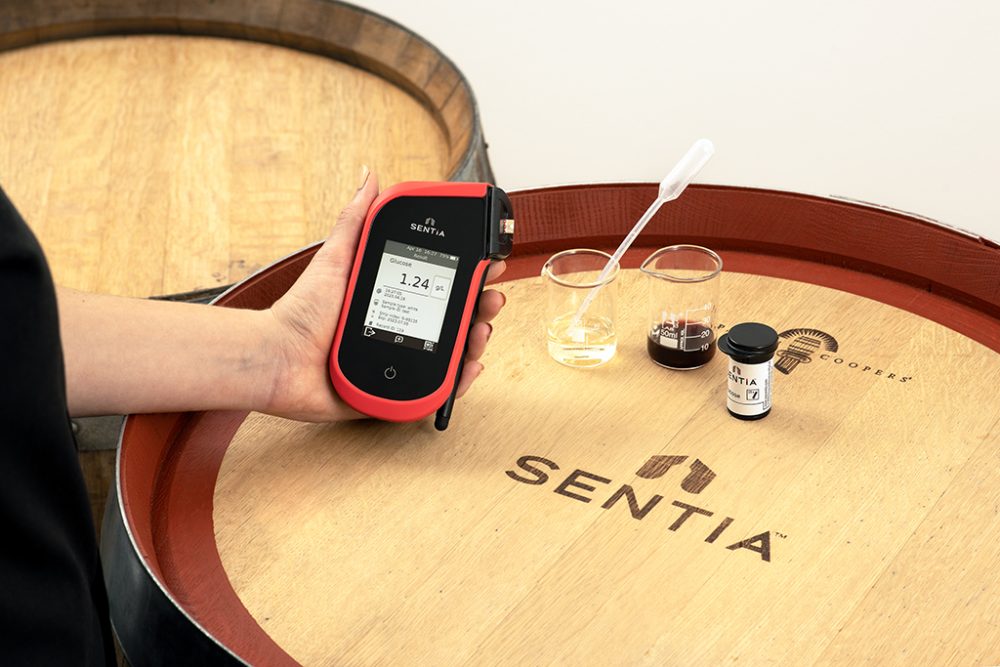Unfortunately, good wine doesn’t happen by chance. It takes meticulous crafting.
To produce a quality wine, winemakers must subject their product to a multitude of tests, checks and additions. Most wines will be filtered, stabilized, adjusted, adjusted again, screened for microbes, checked for taints, and so on. And what if a taint gets noted? Well, then we cross our fingers and hope that we’ve caught it early, because dealing with taints is a whole new ball game.
We also now have legalities to consider. Will our wine pass government-set regulatory standards, and how can we check for this? … Say hello to more testing!
Modern wine testing and intervention methods.
Modern day wine practices that have allowed us to improve upon the quality and taste of our wines fall into a number of action-based categories. Tests that promote:
- Product physical and chemical stability
- Product microbial stability
- Product flavour
- Legal compliance with regulatory bodies
Product physical and chemical stability
Many tests can now be performed to promote the physical and chemical stability of wine. We can navigate around problems such as protein hazes and tartrate instabilities but one of the most well-known and encountered problems is oxidation. The ability of winemakers to be able to keep oxidation damage under control has been a real game changer.
When wine is exposed to too much oxygen, oxidation ensues, and this can degrade your product in several ways. Oxygen will readily react with ethanol to produce excess quantities of acetaldehyde, leading to a fruity/sherry taint. It also readily reacts with wine components such as anthocyanins and phenols, which causes browning, unwanted aromas, and flavour profile changes.
So how do we test our way out of oxidation issues? Simple. We add an antioxidant preservative such as sulphur dioxide (SO2) that will “deal” with oxygen exposures. We then monitor the heck out of it, checking its levels and making extra additions where necessary, to ensure that we always have enough in an available form.
These days we can check SO2 concentrations via a number of methods: A/O, Ripper, modified Ripper, spectrophotometry and Sentia. And if you really want to spend some bucks, you could even try gas chromatography.
Product microbial stability
There are several microbes that can impact wine. Some of them we harness for use, and others we just want to avoid as “contaminants”. Two of the biggest contaminants commonly noted in wine are Brettanomyces spp. and acetic acid bacteria. Both can produce undesirable volatile compounds if present in wine and left untreated: acetic acid (both), and 4-ethylphenol/4-ethylguaicol (Brettanomyces).
High acetic acid levels in wine can cause an undesirable vinegar taint, while high 4-ethylphenol/4-ethylguiacol (4-EP/4-EG) levels can cause smells and flavours often described as ‘Band-Aid’, ‘medicinal’, ‘horsey’ and ‘barnyard’.
Common tests that we can now use to screen for microbial contaminants are culture plates, polymerase chain reaction procedures (PCR) and taint checks (e.g., GC-MS used for 4-EP, 4-EG testing, and Sentia or spectrophotometry easy options for acetic acid).
Product flavour
While there are some flavours in wine that we definitely do not want to enhance (e.g., taints), there are others that we do. A winemaker will have to make decisions based on a style of wine that they are hoping to create.
Is your wine tasting a bit flabby and flat? This could be due to your acidity levels. Best to get a titratable acidity reading here. White wine missing that sharp fruity edge? Give your malic acid levels a check.
Legalities – labelling requirements, additives, and taints.
One last reason to test your wine: legalities. In this day and age, a number of wine components must now be measured and concentrations declared.
In most countries you must declare an alcohol content on your wine and this needs to be visible on the label. There are then some components and additives that need to be checked for concentration due to “safety” requirements (e.g., SO2 and volatile acidity).
In Australia a legal limit for volatile acidity in wine has been set at 1.5 g/L (expressed as acetic acid) (AWRI). In the US, this figure varies slightly, being 1.4 g/L for red wines and 1.2 g/L for whites (expressed as acetic acid) (CFR).
So, to test or not to test?
At the end of the day, how much or how little a winemaker wants to test their wine is really up to them. If you’re looking to make something just “okay” and for personal use, then you can probably get away with cutting some corners. If on the other hand you’re looking to create something special, something with the potential to be genuinely remarkable, then you should s invest in some testing!
The more testing and monitoring one does during the winemaking process, the more control one has over final product outputs.
